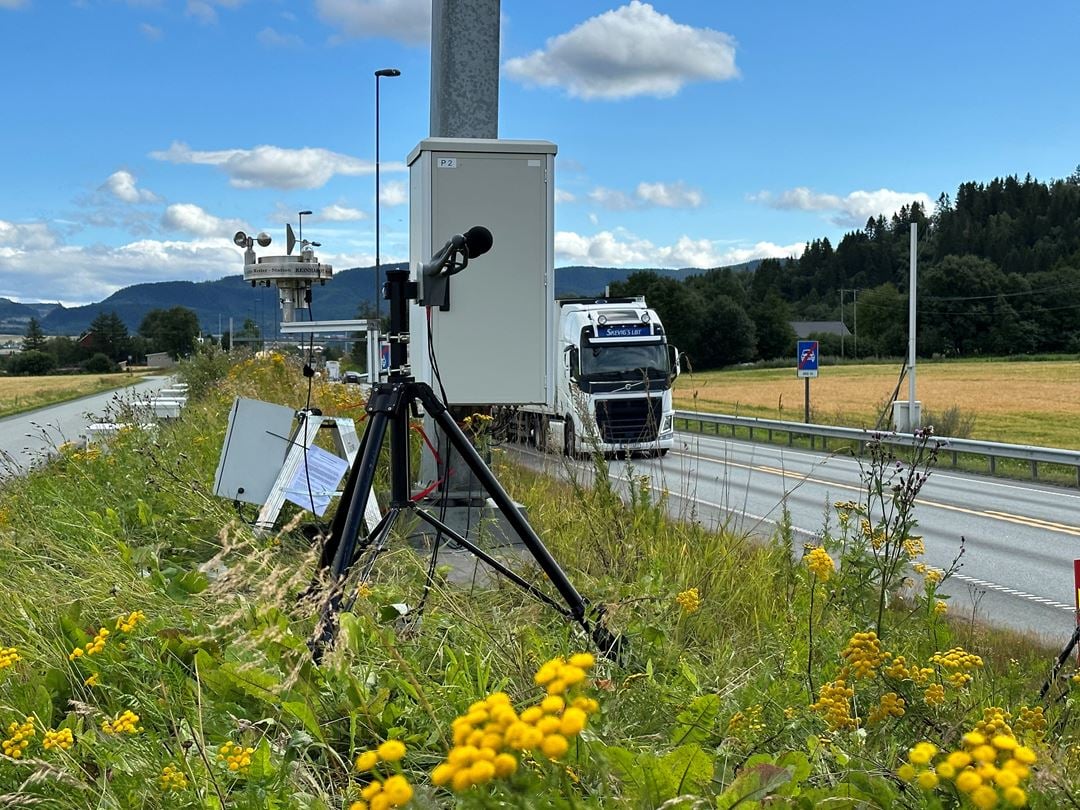Background
For some years, there has been an effort to renew methodologies and regulations for the calculation of noise from road traffic. Older methods are being phased out, and new ones are being introduced. The newer methods have significantly better resolution and accuracy than their predecessors and take into account various details regarding the vehicle fleet, driving patterns, and type of road surface, all of which have a major impact on the noise. However, the parameters used for noise source data are either based on measurements from central parts of Europe or originate from measurements in the Nordics more than 20 years ago. As a result, there is uncertainty about whether they are sufficiently representative of current Norwegian conditions. The high percentage of electric vehicles in Norway is an example of this concern. The wear from studded tires on asphalt is another.
Measurement method
The main component of this project has been to record sounds at various locations along Norwegian roads, with different speeds and road surfaces, to quantify corrections for specific Norwegian conditions. The measurements are made at the roadside with instrumentation to collect data from individual pass-by events of normal vehicles in normal traffic. This includes measurements of noise emission (microphones), speed and acceleration (radar), license plate recognition (camera), as well as weather monitoring (wind, temperature, humidity and rainfall). Additional parameters for each for each vehicle, like type/make/model, engine/power, weight and tyre dimensions, has been fetched from the Norwegian vehicle registry via license plate info.
AI technology applied on sound recordings
Additionally, novel AI technology has been applied on all sound recordings to qualify that isolated pass-by events are not affected by other vehicles, background noise, or similar disturbances. The AI technology has also been used for vehicle classification in cases when the license plate approach failed. The project validates this methodology to be good enough for automated classification of the relevant vehicle classes, thus eliminating the need for license plate recognition in future projects.
New source parameter sets are developed
With this setup, unmanned measurements were made in 2023 for a large amount of single vehicle pass by events, covering different road types, pavements, vehicle classes and speed ranges. The report from this project — FoU-prosjekt – Kildestøy fra veitrafikk — pinpoints the need to update noise source data for application of the Nord 2000 and Cnossos-EU methods in Norway. New source parameter sets for these methods are developed for general use across normal Norwegian road types.

